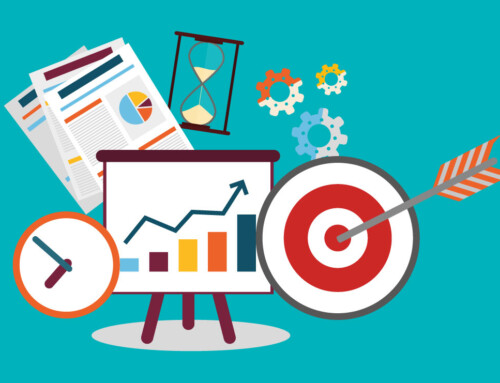Contents
What is the Legal Operations Maturity Model?
The purpose of this article is to provide an overview of the Legal Operations Maturity Model (LOMM) and explain how it works. The LOMM is a comprehensive framework for evaluating your organization’s legal operations infrastructure and providing recommendations on how to improve it. Basically, it shows the progress made in your legal company in terms of maturity; all based on staff count, budget, and overall size.
What is LOMM Used For?
The LOM is a framework for assessing the maturity of a law firm’s legal operations function. Takes on the number of stages differ according to different professionals. It identifies six stages of maturity and provides recommendations for each stage on how to move forward. These recommendations are based on research conducted by Forrester Consulting in partnership with JusticeCorps, an organization that provides pro bono services to low-income individuals through lawyers across the country.
The 6 Stages of Legal Operations Maturity
The 6 Stages of Legal Operations Maturity are:
- Stage 1 – Underdeveloped Assets and Capabilities
- Stage 2 – Asset Management & Process Improvement
- Stage 3 – Workflow Management and Workflow Automation
- Stage 4 – Law Firm Management Software and Knowledge Management
- Stage 5 – Business Intelligence and Analytics for Law Firms
- Stage 6 – Cloud-Based Solutions
Stage 1 – Underdeveloped Assets and Capabilities
In the first stage, the firm’s legal operations are underdeveloped. This means that there is a lack of a formalized process for managing its information assets; there may be some policies in place but they’re not being followed or enforced. In addition to this, there may also be other issues such as:
- Lack of standardization across departments and functions
- Poorly defined roles and responsibilities across departments and functions (e.g. who owns what?)
- Inconsistent use of tools within the firm
Stage 2 – Asset Management and Process Improvement
Stage 2 of the LOMM is the asset management and process improvement stage. This is where you will see the most noticeable changes in your legal operations. You’ll start to see an increase in efficiency, as well as better results from your team and processes.
Asset Management: Asset management refers to how you manage all of your firm’s assets–from technology and equipment to people and data. When implemented properly, it helps law firms better organize their resources so they can be used more efficiently for maximum value creation.
Process Improvement: Process improvement refers to implementing new ways of doing things that make sense for how a particular business works best. A great example would be automating certain parts of the workflow so lawyers spend less time doing repetitive tasks manually each day while still getting stuff done.
Stage 3 – Workflow Management and Workflow Automation
Workflow management is the process of managing workflows, while Workflow Automation is the process of automating workflows. Workflow management and workflow automation are two different things; however, they can be done together to help improve efficiency in your organization.
Workflow Management: Done manually or with software
- Manual – Managers create their own processes for handling tasks and assigning them to team members based on experience and intuition. This may be effective but also time-consuming because there’s no standard way to do things and therefore no way to ensure consistency across teams or departments within an organization.
- Software-assisted – With the use of a CRM solution such as Runsensible you will be able to relay tasks and essential information for each task to the right person/people with the least amount of time spent.
Stage 4 – Law Firm Management Software and Knowledge Management
At this stage, you are using Law Firm Management software to manage processes and provide data for decision-making. You also have a knowledge management system in place to capture best practices, share knowledge across teams and locations, train new staff members on the firm’s policies and procedures, and more.
Knowledge management is key to improving performance at this stage because it allows you to effectively use your technology investments by leveraging them as part of an integrated system that ensures all parts of your organization work together seamlessly. This can help increase productivity by reducing time spent on administrative tasks like document sharing or billing, increase client satisfaction through better communication between lawyers, improve operational efficiency by making sure everyone has access to up-to-date information about their cases, reduce costs associated with training new hires because there will be fewer mistakes due to lack of familiarity with existing systems.
Stage 5 – Business Intelligence and Analytics for Law Firms
- Business Intelligence and Analytics for Law Firms
- What is Business Intelligence and Analytics?
- How to use Business Intelligence and Analytics for your law firm?
Business intelligence (BI) is a data-driven approach that uses information from sources such as databases, spreadsheets, documents, and other online sources to help you make better decisions. BI can help you find new opportunities by making sense of your data so that it’s easier to analyze than if it were just sitting in static reports on your computer screen or printed out on paper. It also gives you access to historical information about past events or trends in areas such as sales performance or customer retention rates so that when similar situations arise again later on down the road there won’t be any surprises! In addition, BI tools have been designed specifically with lawyers in mind – they’re easy to use but powerful enough that even experienced users will benefit greatly from them too.”
Stage 6 – Cloud-Based Solutions
Stage 6 is where you get the most value. In this stage, you have a cloud-based platform-as-a-service solution with integrated apps that can be used by your entire organization anywhere at any given time. Big data analytics and business process management tools are also available here, along with Customer Relationship Management (CRM) software like Runsensible to help manage all of your client’s information in one place.
There are some optional software as a service (SAAS) options available at this stage as well: database solutions, EDD/EMA/E-Signature Applications, and practice management tools such as RunSafe’s Practice Management System.
Conclusion
The Legal Operations Maturity Model provides a framework for legal departments to assess their current state and develop a plan to improve. It also allows law firms and other stakeholders to understand where they fall in terms of their capabilities, so they can make better decisions about how they want to invest in technology solutions.
FAQ
1. Where can I find a safe and reliable CRM software?
Here you can access a 14-day free trial of Runsensible to see if our software can truly match all of your needs.
2. What options does Runsensible offer that might help my law firm grow?
From data/task/project management, multiple ways to keep in touch with clients and staff, workflow automation to time tracking, and anything that can increase efficiency and productivity and reduce errors, Runsensible has it all.
Disclaimer: The content provided on this blog is for informational purposes only and does not constitute legal, financial, or professional advice.







